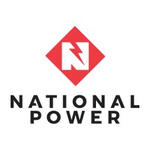Elevance Health, a Fortune 20 healthcare company, has embarked on a transformative cloud journey. Amish Patel, the chief technology officer responsible for advancing that cloud journey, discusses the company’s cloud migration—and the valuable lessons learned along the way—with McKinsey’s Pablo Prieto. The discussion sheds light on the steps Elevance Health is taking to enhance consumer experiences, use cloud-native approaches, and drive digital innovation in the healthcare industry.
What follows are the main takeaways from that conversation.
Cloud journey and learnings
Pablo Prieto: Amish, could you share some key learnings and insights from your cloud journey at Elevance Health?
Amish Patel: Elevance Health embarked on its cloud journey in 2017, initially focusing on migrating member-facing digital assets to the cloud. Over the past six years, we have migrated numerous platforms and petabytes of data. We started with an organic approach but realized this was not moving the needle fast enough. So we shifted to a systematic migration-factory model [an “assembly-line” model of people, processes, and tools supported by technology] to standardize and speed up our cloud migration. We looked at our entire portfolio of apps and platforms that support a business unit, and we were able to migrate entire app and platform stacks by collaborating closely with our business leaders. This approach has been successful in achieving our mission of improving healthcare experiences through digital innovation.
Pablo Prieto: Where do you currently stand in your cloud journey?
Amish Patel: We are currently in the middle of our cloud journey. We have established migration factories and are systematically migrating digital assets to the cloud. Although we have made significant progress, there is still work to be done.
Drivers and benefits
Pablo Prieto: What were the main drivers behind your cloud transformation, and what benefits have you observed?
Amish Patel: The main drivers were agility, stability, resiliency, and cost optimization. By adopting cloud-native approaches and leveraging automation, we have achieved significant cost savings. Contrary to the belief that the cloud is expensive, we have found that by refactoring and utilizing native cloud capabilities, costs can be reduced by 20 to 40 percent compared to on-premises environments. This has allowed us to optimize resource allocation and enhance the scalability and resiliency of our member-facing applications. Cost of care is a huge issue in healthcare, so this optimized cost model is also important for us to demonstrate to our stakeholders that we are using our resources in an efficient manner.

Operating model and collaboration
Pablo Prieto: How has your operating model evolved throughout the cloud journey, and how important has collaboration been in this transformation?
Amish Patel: We have embraced agile methodologies and transitioned to a product-based mindset where we continually iterate on our offerings based on user feedback. In such a setup, collaboration with our business partners has been crucial. We have invested in creating venues and mechanisms so technologists can better understand the goals the business is trying to achieve and subject-matter experts on the business side can better understand technology trade-offs and implications. The cross-pollination between technologists and business subject-matter experts has been a significant benefit, especially given the recent explosion of AI with large language models. Initially, we focused on migrating platforms with high change velocity, but we are now digitizing our entire business platform stack and using advanced capabilities, such as continuous integration and continuous delivery (CI/CD). Our operating model has evolved to a product-centric approach driven by cloud technologies, allowing us to deploy new capabilities and assets quickly and address the full range of member needs through an integrated digital platform.
Use cases and value creation
Pablo Prieto: Can you share any specific use cases where the cloud has created value for Elevance Health?
Amish Patel: One notable use case is our engagement data platform, which centralizes member-facing data and standardizes interactions across multiple channels using APIs. By leveraging cloud-native approaches, we have achieved agility, scalability, and resiliency in our member-facing applications. This “single-pane-of-glass” approach to standardization, where you, say, improve resiliency in one place and then all your channels are able to immediately benefit, has significantly enhanced member experiences and streamlined processes, providing us with a competitive advantage.
Resiliency, security, and privacy
Pablo Prieto: How have you addressed concerns about resiliency, security, and privacy in your cloud transformation?
Amish Patel: We have implemented a tiered resiliency approach, running critical platforms actively across different regions. Regular resiliency testing has given us confidence in our processes and configuration. Security of our data and personally identifiable information is of utmost importance, and we have embedded security tools, such as code scanning, throughout the development process, adopting a shift-left approach.
Lessons learned and advice
Pablo Prieto: Reflecting on your cloud journey, what lessons have you learned, and what advice would you give to others starting a similar transformation?
Amish Patel: Mindset and process changes have been crucial and are intertwined. First, all teams, including risk, security, audit, compliance, and engineering, need to align around the idea that automation is critical. That provides the foundation to use cloud capabilities to automate as many processes as possible. Second, upskilling talent is essential so people understand how to use the new tools and capabilities effectively. Third, finance teams play a significant role in projecting costs and maximizing cloud adoption benefits.


.jpg)
